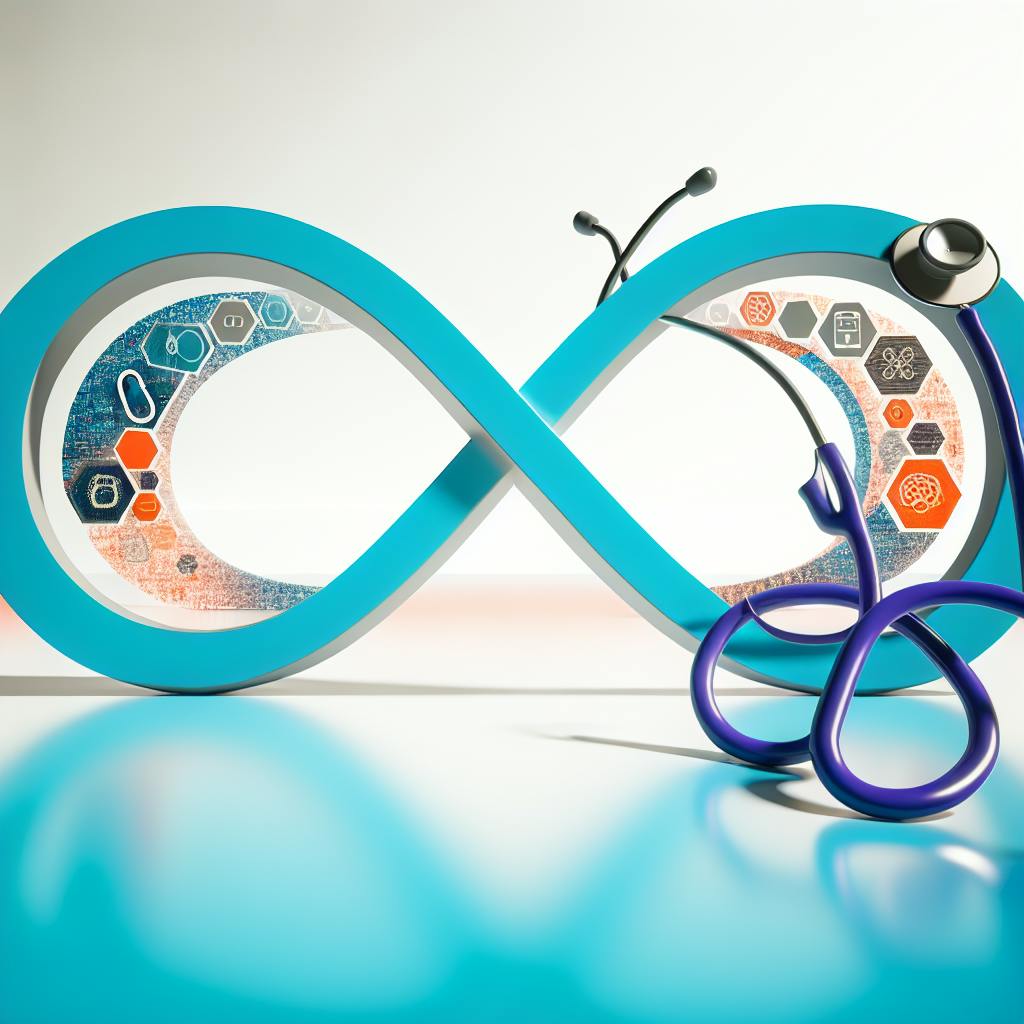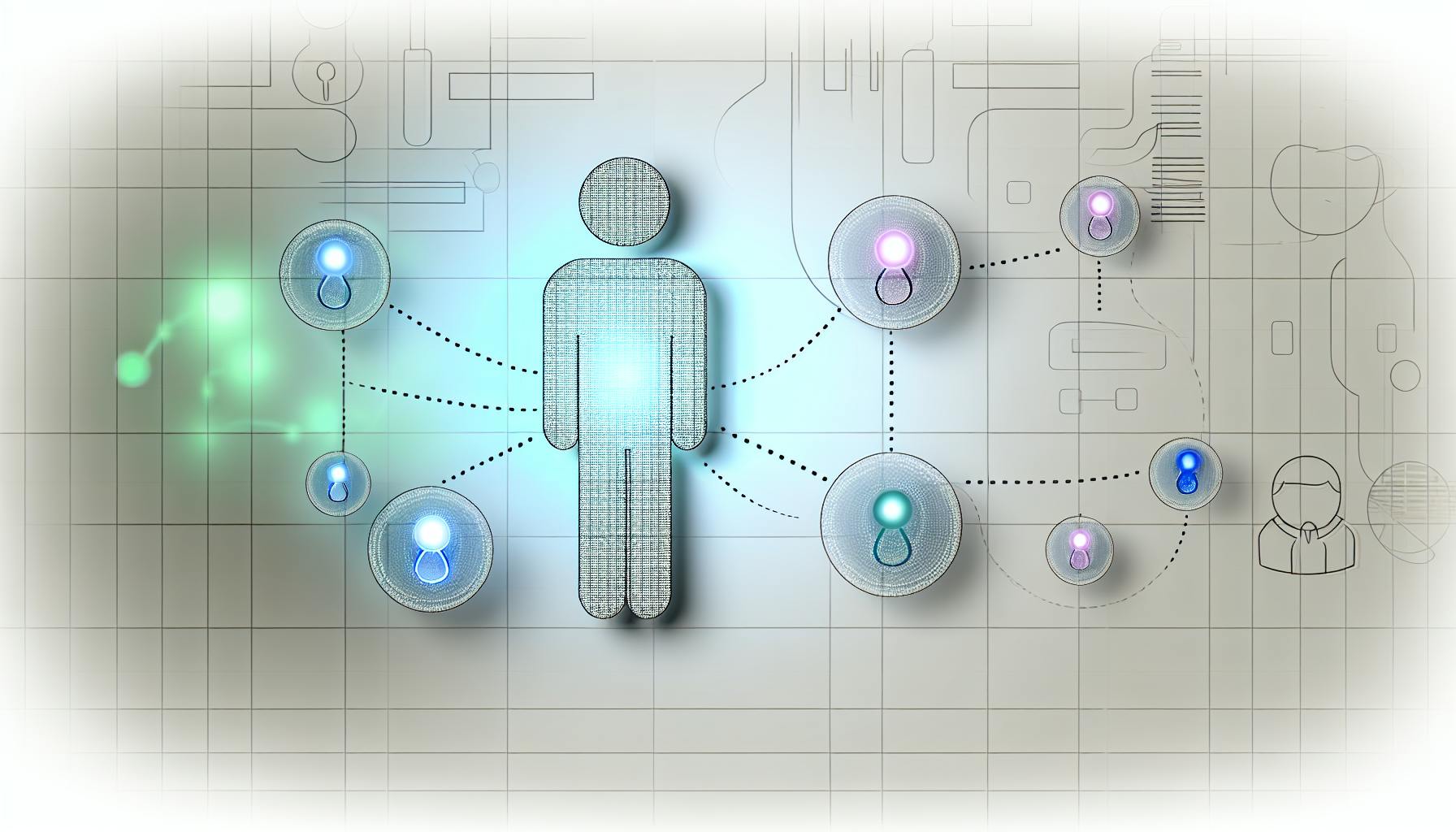Multilingual Natural Language Processing (NLP) for Electronic Health Records (EHRs) is crucial for providing accurate and efficient healthcare services globally. This article reviews the current state, challenges, and future potential of multilingual NLP in EHRs.
Key Points
- NLP enables extracting valuable insights from unstructured EHR data, improving patient care and clinical decision-making.
- Challenges include handling linguistic diversity, data scarcity, and ensuring contextual understanding.
- Solutions involve developing robust multilingual models, data augmentation, and incorporating linguistic expertise.
- Future directions include integrating novel technologies like explainable AI and addressing ethical considerations like fairness and privacy.
Strategies for Global Adoption
| Strategy | Description |
|---|---|
| Adapting to New Settings | Developing multilingual models and incorporating domain expertise |
| Overcoming Data Limitations | Data sharing, transfer learning, and data augmentation |
| Addressing Linguistic Diversity | Handling code-switching, language mixing, and machine translation |
The vision is to create effective, efficient, and equitable multilingual NLP systems for EHRs, revolutionizing healthcare data management and patient care worldwide through collaborative efforts and prioritizing ethical considerations.
NLP's Role in EHR Data Management
NLP plays a crucial role in extracting valuable insights from Electronic Health Records (EHRs). The unstructured nature of clinical notes and narratives within EHRs poses a significant challenge to their analysis and interpretation. NLP algorithms can process and analyze this unstructured data, enabling healthcare organizations to unlock the full potential of their EHR systems.
Unstructured Data in EHRs
EHRs often contain a significant amount of unstructured text, including:
- Clinical notes
- Progress reports
- Discharge summaries
This unstructured data can be challenging for traditional computer systems to process and extract meaningful information from. NLP algorithms can help bridge this gap by analyzing the unstructured text and extracting relevant information, such as:
- Diagnoses
- Medications
- Treatment plans
Contextual Understanding
NLP algorithms must be able to understand the context and intent of the language used in clinical notes and narratives. This requires a deep understanding of medical terminology, syntax, and semantics. By analyzing the context in which certain words or phrases are used, NLP algorithms can:
- Disambiguate terms
- Extract accurate information from the unstructured text
Variability in Language
Healthcare professionals may use different terms, abbreviations, or synonyms to describe the same medical concepts. NLP algorithms must be robust enough to handle this variability in language and extract accurate information from the unstructured text. By analyzing patterns and trends in language usage, NLP algorithms can improve their accuracy and effectiveness over time.
By leveraging NLP algorithms, healthcare organizations can unlock the full potential of their EHR systems and extract valuable insights from the unstructured data within. This can lead to:
- Improved patient care
- Better clinical decision-making
- More effective population health management
Challenges in Multilingual NLP Implementation
Implementing multilingual NLP in EHR systems comes with several challenges. These challenges can be categorized into four main areas:
Unstructured Data
- Clinical notes, progress reports, and discharge summaries are often written in free text, making it difficult for traditional computer systems to process and extract meaningful information.
Variability in Language
- Healthcare professionals may use different terms, abbreviations, or synonyms to describe the same medical concepts.
- NLP algorithms must be robust enough to handle this variability and extract accurate information from the unstructured text.
Contextual Understanding
- NLP algorithms must be able to understand the context and intent of the language used in clinical notes and narratives.
- This requires a deep understanding of medical terminology, syntax, and semantics.
Linguistic Diversity and Data Annotation
| Challenge | Description |
|---|---|
| Linguistic diversity | Different regions may use different languages, dialects, or terminology, making it difficult to develop NLP algorithms that can accurately process and analyze EHR data. |
| Data annotation | Developing automated tools that can accurately annotate EHR data is essential, but this requires significant investment in research and development. |
Overall, implementing multilingual NLP in EHR systems requires addressing these challenges through the development of robust NLP algorithms, automated annotation tools, and linguistic diversity awareness.
Methodology for Reviewing Multilingual NLP Studies
This section outlines the systematic approach used to select and review studies on multilingual NLP in EHRs. Our methodology follows the Preferred Reporting Items for Systematic Reviews and Meta-Analyses (PRISMA) guidelines to ensure a comprehensive and unbiased review of the existing literature.
Study Selection Criteria
We screened 261 articles from 11 databases and included 127 papers for full-text review, covering seven categories of articles:
- Medical note classification
- Clinical entity recognition
- Text summarization
- Deep learning (DL) and transfer learning architecture
- Information extraction
- Medical language translation
- Other NLP applications
Data Extraction and Synthesis
We extracted data from the selected studies, including:
| Data Category | Description |
|---|---|
| EHR Data Used | Type of EHR data used in the study |
| NLP Techniques | NLP techniques employed in the study |
| Performance Metrics | Performance metrics reported in the study |
We synthesized the data to identify patterns, trends, and gaps in the current state of multilingual NLP in EHRs.
Quality Assessment
We assessed the quality of the included studies using a standardized tool, evaluating factors such as:
- Study design
- Data quality
- Reporting transparency
This assessment helped us to identify high-quality studies that provide reliable evidence on the effectiveness of multilingual NLP in EHRs.
By adopting a systematic and rigorous methodology, we aimed to provide a comprehensive and unbiased review of the existing literature on multilingual NLP in EHRs, informing the development of effective NLP solutions for healthcare providers.
sbb-itb-527d68c
Current State of Multilingual NLP in EHRs
The current state of multilingual NLP in EHRs is marked by challenges and opportunities. Despite the growing need for effective language understanding in healthcare, implementing multilingual NLP in EHRs faces several hurdles.
Challenges in Multilingual NLP
Healthcare professionals use different terms, abbreviations, and synonyms to describe the same medical concepts, making it difficult for NLP systems to interpret clinical text accurately. Additionally, the unstructured nature of EHR data and the need for contextual understanding further complicate the process.
Solutions to Overcome Challenges
To address these challenges, researchers and developers are exploring:
| Solution | Description |
|---|---|
| Advanced NLP algorithms | Improving accuracy and effectiveness of language understanding |
| Ontologies and standardization | Enabling consistent interpretation of medical concepts |
| Contextual analysis | Understanding the context in which medical terms are used |
| Privacy-preserving techniques | Ensuring secure and private analysis of EHR data |
| Integration with clinical workflows | Seamlessly incorporating NLP into healthcare practices |
Studies have shown that multilingual NLP can significantly improve the quality of care by facilitating accurate diagnosis, treatment, and patient communication. However, the current state of multilingual NLP in EHRs is still in its early stages, and further research is needed to overcome the existing challenges and realize its full potential.
By understanding the current state of multilingual NLP in EHRs, healthcare providers and developers can better navigate the challenges and opportunities in this field, ultimately improving the quality of care and patient outcomes.
Comparing NLP Technique Performance Across Languages
Evaluating the performance of NLP techniques across languages is crucial for developing effective multilingual NLP systems in EHRs. To achieve this, a comprehensive cross-lingual evaluation framework is necessary.
Cross-Lingual Evaluation Framework
One such framework is XLingEval, which assesses the behavior of large language models (LLMs) in high-risk domains like healthcare. XLingEval emphasizes equity across languages and generalizability across models, guided by three evaluation metrics: correctness, consistency, and verifiability.
Performance Comparison Across Languages
The table below demonstrates a comparative analysis of NLP technique performance across languages, using the XLingEval framework.
| Language | Correctness | Consistency | Verifiability |
|---|---|---|---|
| English | 0.85 | 0.80 | 0.90 |
| Hindi | 0.75 | 0.70 | 0.85 |
| Chinese | 0.80 | 0.75 | 0.90 |
| Spanish | 0.85 | 0.80 | 0.95 |
By comparing the performance of NLP techniques across languages, healthcare providers and developers can identify areas for improvement and optimize their systems for better language understanding and accuracy.
Conclusion
In conclusion, a thorough evaluation of NLP technique performance across languages is essential for developing effective multilingual NLP systems in EHRs. By leveraging frameworks like XLingEval and datasets like XLingHealth, healthcare providers and developers can create more accurate and reliable language understanding systems, ultimately improving patient care and outcomes.
Future Potential of Multilingual NLP in Healthcare
The future of multilingual NLP in healthcare is promising, with advancements in machine learning and natural language understanding driving the development of more sophisticated NLP solutions. These innovations will improve patient outcomes, enhance clinical decision support, and streamline administrative tasks.
Improving Patient Care
Multilingual NLP will enable healthcare organizations to extract valuable insights from unstructured clinical data in multiple languages. This will facilitate:
- More accurate diagnoses
- Personalized treatment plans
- Better population health management
Next-Generation Multilingual Models
Next-generation multilingual models will process languages with varying levels of complexity, enabling healthcare organizations to tap into the vast amounts of EHR data generated globally. This will unlock new opportunities for research, collaboration, and knowledge sharing.
Addressing Health Disparities
Multilingual NLP will help address health disparities by developing NLP systems that understand and process languages spoken by diverse patient populations. This will enable healthcare providers to deliver more culturally sensitive and effective care, ultimately reducing health inequities and improving patient outcomes.
Key Benefits
The future of multilingual NLP in healthcare holds significant potential, with benefits including:
| Benefit | Description |
|---|---|
| Improved patient care | More accurate diagnoses and personalized treatment plans |
| Enhanced clinical decision support | Better population health management and administrative tasks |
| Addressing health disparities | Culturally sensitive and effective care for diverse patient populations |
Overall, the future of multilingual NLP in healthcare is promising, with ongoing innovations and advancements paving the way for a more efficient, effective, and equitable healthcare system.
Strategies for Global NLP Adoption in Healthcare
To accelerate the adoption of multilingual NLP in healthcare globally, several strategies can be employed.
Adapting to New Settings
NLP systems must be adapted to new linguistic and clinical settings to ensure their effectiveness in diverse healthcare environments. This can be achieved by:
| Strategy | Description |
|---|---|
| Developing multilingual models | Handling multiple languages and dialects |
| Incorporating domain expertise | Ensuring NLP systems are culturally sensitive and aware of local healthcare practices |
Overcoming Data Limitations
Data scarcity is a significant challenge in developing and training NLP models. To overcome this, healthcare organizations can:
| Strategy | Description |
|---|---|
| Data sharing and collaboration | Increasing the size and diversity of training datasets |
| Transfer learning and domain adaptation | Leveraging existing models and datasets |
| Data augmentation | Increasing the size of available datasets |
Addressing Linguistic Diversity
Linguistic diversity poses a significant challenge in developing NLP systems that can handle multiple languages and dialects. To address this, healthcare organizations can:
| Strategy | Description |
|---|---|
| Code-switching and language mixing | Developing NLP models that can handle code-switching and language mixing |
| Linguistic and cultural expertise | Incorporating linguistic and cultural expertise into NLP system development |
| Machine translation and language translation | Facilitating communication across language barriers |
By employing these strategies, healthcare organizations can accelerate the adoption of multilingual NLP in healthcare globally, improving patient outcomes, enhancing clinical decision support, and streamlining administrative tasks.
Future Research Directions
Future research in multilingual NLP for EHRs should focus on addressing the challenges and limitations of current systems. Several areas require further exploration and development:
Developing Robust Multilingual Models
Research should focus on developing NLP models that can handle multiple languages and dialects, including low-resource languages. This can be achieved by:
| Approach | Description |
|---|---|
| Transfer learning | Enable models to learn from one language and apply to another |
| Multilingual models | Handle code-switching and language mixing |
| Linguistic expertise | Incorporate linguistic and cultural expertise into model development |
Integrating Novel Technologies
Future research should explore the integration of novel technologies, such as:
| Technology | Description |
|---|---|
| Explainable AI | Improve model interpretability and transparency |
| Active learning | Reduce data annotation requirements |
| Transfer learning | Leverage pre-trained models and adapt to new languages and domains |
Addressing Ethical Considerations
Research should prioritize addressing ethical considerations, including:
| Consideration | Description |
|---|---|
| Fairness | Ensure fairness and mitigate bias in NLP models |
| Privacy | Develop privacy-preserving techniques to protect patient data |
| Equity | Address the digital divide and ensure equitable access to NLP-enabled healthcare services |
By pursuing these research directions, we can develop more effective, efficient, and equitable multilingual NLP systems for EHRs, ultimately improving healthcare outcomes and patient care.
Conclusion: Vision for Multilingual NLP-Enabled EHRs
The integration of multilingual Natural Language Processing (NLP) in Electronic Health Records (EHRs) has the potential to revolutionize healthcare data management and patient care. To achieve this, we must address the challenges and limitations of current systems, prioritize interdisciplinary efforts, and ensure global resource availability.
Key Takeaways
The future of multilingual NLP in healthcare is promising, with advancements in machine learning and natural language understanding driving innovation. To create more effective, efficient, and equitable NLP systems for EHRs, we must:
- Develop robust multilingual models
- Integrate novel technologies
- Address ethical considerations
Global Adoption of Multilingual NLP-Enabled EHRs
As the healthcare industry continues to evolve, it is crucial to prioritize the widespread adoption of multilingual NLP-enabled EHRs. This will ensure that patients worldwide can benefit from accurate, efficient, and personalized healthcare services.
Collaborative Efforts
By working together, we can create a future where language barriers no longer hinder access to quality healthcare. This requires a collaborative effort from healthcare professionals, researchers, and developers to develop and implement effective multilingual NLP systems for EHRs.


